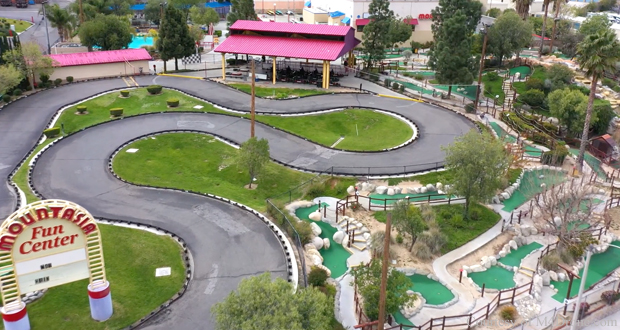The California quail is, as the name states, California’s official state bird, and can be seen right here in the Santa Clarita Valley! Some may have seen them crossing through their backyard or roaming around in bushes, their topknots bobbing as they walk. These birds also play an important part in their ecosystem.
Appearance
It’s easy to distinguish these birds from others, as they have an upside-down water drop-shaped plume on top of their head, known as topknots. Its calls sound like it’s saying “Chi-Ca-Go!” over and over again. The males use their topknots to intimidate other males and gain dominance. They are about 10 inches in length. Males have a black topknot, and females have a smaller brown one. Males have a blue-gray color on their bellies with a black face outlined with white, while females are plain brown with no facial markings. Baby California quails look similar to females, light brown in color, but with down feathers that make them poof up. To tell the difference between California quails and other similar quails, like Gambel’s quail, California quails have a white and chestnut scale pattern on their belly, while Gambel’s quail do not.
Behavior
California quails belong in the Galliformes group, meaning they typically like to stay on the ground, only flying when they need to. Males may sometimes be seen calling from high tree branches. Their legs allow them to run up to 12 miles per hour, and if startled they will fly into nearby greenery. Quails like to make their nests in shallow holes in the ground, and finish making them by early summer. Females will lay their eggs in other quails’ nests, known as egg dumping, so the nests could contain as many as 28 eggs. Once the eggs hatch, California quails form groups, or coveys, of up to 16 with multiple adults leading the chicks. One male will often be on watch for the rest of the group. After around 6 weeks the quail chicks are all grown up, and during the mating season in spring they leave their coveys and form pair bonds. Forming pair bonds means the quails will pick the same mate for the next few years. Then the cycle starts again in the summer.
Eating Habits
As omnivores, California quails will eat seeds, berries, and insects like snails, caterpillars, and beetles. Like all birds, quails need to eat pebbles and grains to send into their gizzard in order to digest their food. They may appear in backyards if there’s brittlebush, deerweed, redberry, or Pacific blackberry planted in the ground. These birds will also come to visit if seeds such as pacific blackberries, lotuses, or lupines are present.
Where they Live
California Quails live in the West Coast of the US. They dwell in open woodlands, parks, and near streams. They like low, shaded plants.
Importance to the Ecosystem
These quails are a key food source for bobcats, coyotes, and sometimes domestic cats will hunt them. Snakes will also eat quail eggs. Because of their diverse diet, quails also help to control pest populations and spread seeds.
Conclusion
In summary, California Quails are unique in that they are Galliformes. They’re an important asset to the ecosystem as a prey species and with their foraging habits. They can be found in parks, open woodlands, and near streams scavenging for food. California Quails will often appear in backyards as well when there’s birdseed spread on the ground.





























